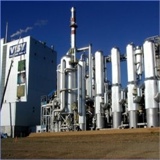Designated Hot Work Zone Inspection
-
Site conducted
- Janus Temple
- Janus AZ
- Janus IN
- Janus AZ
- ASTA Cartersville
- ASTA Houston
- BETCO
-
What area is being inspected?
-
What area is being inspected?
-
Conducted on
-
Prepared by
Designated Hot Work Zone Inspection
-
A designated hot work area must be inspected and free of combustibles/flammables at all times. Designated hot work areas do not requires a fire watch or a hot work permit.
-
Take a picture of the general area.
-
Does the area have sign(s) posted labeling it a hot work area?
-
Place a work order to have sign installed in the area.
-
Are there any flammable materials in the area? (ex. boxes, paper material, aerosol cans, etc.)
-
Remove and/or protect items from hot work. (i.e. place aerosol cans in flammable cabinets, remove boxes, etc.)
-
Does the area have appropriate flame-resistant curtains to deflect/contain any sparks and shield welding from outside view?
-
Place a work order for needed items.
-
Is there at least one fire extinguisher in the area?
-
Stop hot work until a fire extinguisher is placed in the area and put in a work order to have one permanently installed.
-
Has the fire extinguisher been inspected and signed off/dated?
-
Have the fire extinguisher inspected immediately.
-
If needed, is there a flammable cabinet to store combustibles like aerosol cans?
-
Place a work order to have flammable cabinet installed in the area.
-
If hot work is being performed are workers wearing the proper protection? (ex. welding gloves, welding hood, etc.)
-
Stop hot work and ensure employees don the proper PPE.
-
Is the hot work area's housekeeping kept up and clean, no clutter, trip hazards, etc.?
-
Report this to area supervisor to have the area cleaned and decluttered.
-
Give a brief description of the hot work area including areas for improvement if needed.
-
Sign off from inspector.











